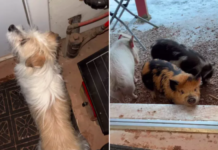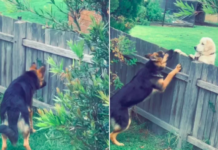Last Updated on August 24, 2023 by Fumipets
How to Train a Puppy: A Guide to Successful Training
Training a puppy is an exciting journey that sets the foundation for a well-behaved and happy adult dog. With patience, consistency, and positive reinforcement, you can shape your puppy’s behavior and create a strong bond that will last a lifetime. Here’s a summary of the key steps and principles to consider when training your new furry companion.
Summary of Puppy Training
Training a puppy involves teaching them essential commands, socializing them with people and other dogs, and instilling good behavior habits. Start with basic commands like “sit,” “stay,” and “come,” using treats and praise to reward their successful responses. Positive reinforcement, consistency, and short training sessions are key to effective training.
Socialization is crucial during puppyhood to help them become comfortable around various people, environments, and situations. Expose them to new experiences gradually and positively to prevent fear and aggression in the future.
Consistency in rules and routines establishes clear expectations for your puppy. Use a designated area for potty training, follow a feeding schedule, and enforce consistent boundaries to avoid confusion.
Puppies have short attention spans, so keep training sessions brief and engaging. Use treats, toys, and enthusiastic praise to keep them motivated and eager to learn.
Remember that patience is essential. Puppies are still learning and exploring the world, so remain patient and understanding as they navigate through their training journey.
Puppy
A new puppy is the most thrilling thing ever! The cuddles and all that loveliness are unbeatable. Another advantage of puppies is that they are essentially habit-free since they are too young to have developed many undesirable behaviors. However, it also means that you are responsible for educating your tiny furry friend about what it means to be a member of your family. Looking for puppy training advice? We consulted Zoom Room’s Heather Gillihan, a certified dog trainer, for advice on how to start your new pet off right.
The Best Way to Train a Puppy
Gillihan advises starting your training before getting a puppy in order to set yourself up for success. Ensure that your house has been puppy-proofed and that you have everything you’ll need for a new puppy. Plan ahead for where you want your puppy to play, sleep, and relieve itself. Additionally, think about which portions of the house will be off-limits.
The finest training technique for teaching your dog right from wrong is positive reinforcement. It is built on rewarding your puppy for a job well done with high-value foods like pieces of hot dog, chicken, or cheese. Your dog will learn from this that obeying their people results in wonderful things.
13 Expert Tips on How to Train Your Puppy
Puppy training involves so many different aspects of life. On how to establish routines, impart etiquette, and potty and crate train your newest family member, Gillihan weighs in with some expert advice.
1. Start Training From Day One
When a puppy does something charming, it’s simple to smile. The issue? The same behaviors, such as jumping up on people to get attention, are annoying when your dog is an adult. One of you two is being taught every minute, throughout each exchange. Ensure that it’s the dog and not you, advises Gillihan. You won’t have to worry about undesirable behaviors in the future if you don’t support them today.
2. Keep an Eye on Your Puppy at All Times
Unattended puppy wandering is a recipe for catastrophe (potty messes and chewed-up possessions come to mind). Keep your dog in a limited space or tie him to you with a leash or longer house line when you can’t be actively observing him.
3. Feed Meals in the Crate
Gillihan advises providing meals inside the kennel to help your dog learn positive associations with it. When your dog begins to eat, shut the kennel door. But when he’s through, open the door so your dog may go. Increase the amount of time your puppy spends inside the crate before opening the gate as he becomes used to it. In order to avoid frightening your dog, be careful to introduce crate training gradually.

4. Make Bedtime Extra Cozy
For your dog, the first few nights in a new location might be stressful. Put a plush comfort animal in the kennel that houses your dog. Some of them may be warmed up to give your dog the impression that he is still sleeping with company and even have a pulse.
5. Keep the Crate Close to Your Bed
Keep your puppy very near to you throughout the night to help calm first-night anxieties. In order to have your puppy’s crate at the same level as your bed (but not in your bed), place it on top of a solid table or chair. To get a better sense of the distance, stick your fingers through the crate door. If your puppy howls at night, take him outside to relieve himself, and then put him back in the crate right away. Put the crate on the floor first, then carefully move it away from the bed and into the room where your dog will sleep.
6. Keep a Schedule
According to Gillihan, the secret to quick toilet training is putting your dog on a schedule. Most pups need to use the restroom after eating, sleeping, or playing. Take your dog outside to use the loo first thing in the morning. She explains that if your dog goes potty, he has earned 30 to 45 minutes of fun. It’s time to return to the crate and unwind after that. Depending on your puppy’s level of activity, playtime may only need to last 10 to 20 minutes since many puppies will go asleep before this time has passed.
You may keep your puppy in the crate longer if he nods off while inside. However, if your puppy is awake, remove him from the crate after 15 minutes and allow him a chance to relieve himself. If he doesn’t leave, you have to put him back in the box for another 15 minutes before trying again. Playtime resumes after he uses the toilet. Potty time is followed by fun and a crate break.
7. Slowly Expand Your Puppy’s Access
Your dog will probably have accidents if you give him free rein in the house. Keep your dog in a small space and introduce him to the rest of the house gradually. “A good rule of thumb is that your puppy gets access to another room for every month that he goes without having an accident in his primary space.”
8. Learn Your Puppy’s Potty Signs
When you’re bringing your dog outdoors to use the toilet, pay careful attention to his body language. What does he do in order to be ready to do business? These are the same actions your puppy will do inside as well. “I’m aware that when one of my males begins to circle about, he’s either going to defecate or is getting ready to do so. Therefore, Gillihan adds, “we go outdoors.

9. Create a Potty Station
Establish a location for your puppy to hang out if you must be gone from the home for an extended period of time. You may use a playpen section or a gated room. A potty pad and your puppy’s bed should be placed in the crate.
10. Teach Your Puppy Not To Bite
Young puppies prefer to nibble, particularly on your fingers and toes, and have keen teeth. If your dog bites too hard during playfulness, halt the activity. I’ll leave, enter the toilet and close the door for around 10 or 20 seconds, adds Gillihan. You may also steer your dog away from your body and towards a suitable chew toy.
11. Start Socializing Right Away
Your puppy may acquire used to a variety of settings by being exposed to various locations, people, and animals. Puppies should wait to go out in public after receiving all of their immunizations at 16 weeks, according to some veterinarians. The American Veterinary Society of Animal Behaviour (AVSAB) contends that pups should socialize before receiving all of their vaccinations, nevertheless.
The AVSAB reports that the leading cause of mortality for dogs under 3 years old is behavioral disorders rather than infectious infections. To ensure that your dog doesn’t miss out on this essential socialization phase, you may still carefully introduce new things to them.
12. Incorporate Training Into Everyday Life
You don’t have to give your puppy training 30 minutes of your entire attention, according to Gillihan. Just spread out your use throughout the course of the day. For instance, get in the habit of sitting and remaining there while your coffee is boiling while a commercial is on television.
13. Use Treats as Rewards
Stock lots of snacks since you’ll be using them often throughout training. But what if your dog becomes knowledgeable in his field? According to Gillihan, you must change from “bribe” to “reward.” Hide the rewards after your little dog exhibits the behavior you’re seeking. Always give your dog praise for a job well done, but don’t forget to periodically give him goodies too. You need rewards less and less when a behavior develops into a habit.
5 Q&A on Puppy Training
1. When should I start training my puppy?
It’s best to start training your puppy as early as possible, ideally around 8 to 12 weeks of age. Early training sets the foundation for good behavior and helps prevent the development of undesirable habits.
2. What are the most important commands to teach my puppy?
Basic commands like “sit,” “stay,” “come,” “down,” and “leave it” are essential for safety and communication. Focus on these commands before progressing to more advanced training.
3. How do I potty train my puppy?
Establish a consistent potty schedule, take them to the designated potty area after eating, waking up, and playing, and reward them with treats and praise when they eliminate in the correct spot.
4. How can I prevent chewing and biting behaviors?
Provide appropriate chew toys to satisfy their natural urge to chew. If your puppy bites during play, redirect them to a toy and avoid rough play that encourages biting.
5. What’s the role of positive reinforcement in training?
Positive reinforcement involves rewarding your puppy’s good behavior with treats, praise, and affection. This approach encourages them to repeat desirable actions and strengthens the bond between you and your puppy.
Training a puppy requires dedication, time, and a deep understanding of their needs. By focusing on positive reinforcement, socialization, and consistent routines, you can help your puppy grow into a well-mannered and happy adult dog.


















